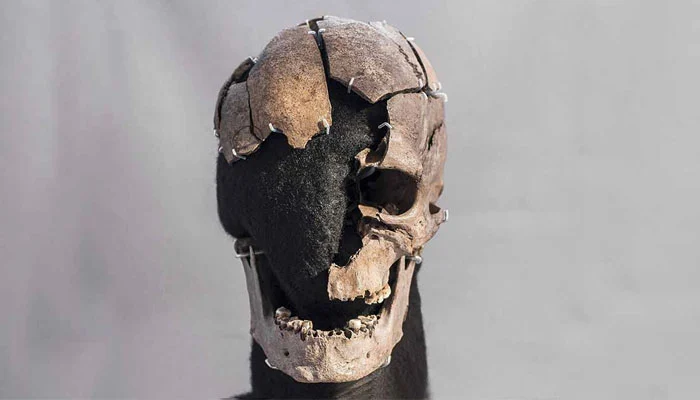The intriguing old skeleton known as the “Vittrup Man” was discovered in a peat swamp in northwest Denmark in 1915.
More than a century later, academics have finally pieced together the bizarre events of his life and horrific death, according to the Miami Herald.
The bones, which included an ankle bone, a shin bone, and a partial skull, were recently subjected to a thorough genetic examination, according to a study published on February 14 in the journal Public Library of Science (PLOS) One.
This analysis revealed that the individual was likely small in stature, dark in color, and had blue eyes.
He must have been in his early thirties when he died, perhaps between 3100 and 3300 BC.
Researchers believe he was born somewhere near Norway or Sweden. He appears to have lived as a hunter-gatherer and fisherman, eating on marine creatures like seals and whales, until transitioning to a farming lifestyle, maybe after relocating among the Funnel Beaker society of northern Denmark.
Experts claim that this civilisation was “well established” at the period, with “cultural bloom” and economic affluence.
The reason for this transfer is unknown; nevertheless, it is known that he did not stay here long.
He was brutally murdered after a few years of living in the rural Funnel Beaker culture. A weapon—perhaps a wooden club discovered near his remains—was used to administer at least eight blows to his head, fracturing it.
Much of his body, including his limbs and torso, most certainly rotted in the bog over time, though they may have been partially dumped there.
Researchers claimed that human sacrifice, which was formerly common in Denmark’s bogs, was the most likely cause of his death.
Outsiders, particularly those of high social status, were frequently subjected to a “dubious honour” including human sacrifice.
The fragmented skull of “Vittrup Man” is on display at Denmark’s Vendsyssel Historical Museum.







